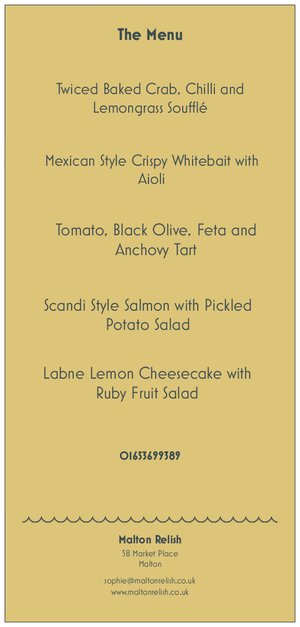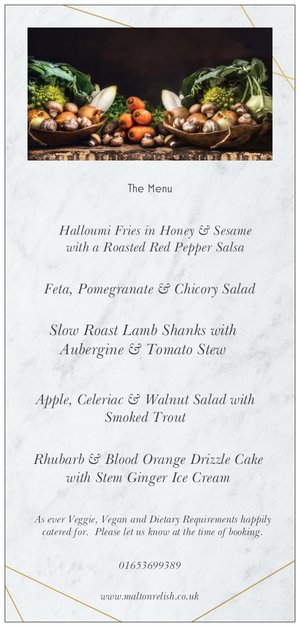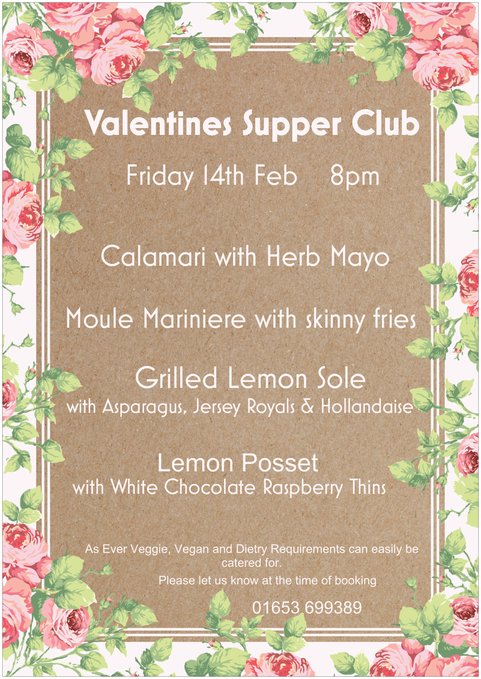
Tag Archives: vegetables
How to beat the February Blues
If you’re suffering from a cold, it can seem that the only thing keeping you going is a bag of lozenges and an ever increasing stack of tissues. But there is actually quite a lot that we can do to help shorten these troublesome times.
Apple Cider Vinegar Tea
2 tablespoons of ACV
1 tablespoon of honey
A little lemon juice for taste
A little hot water to dilute (but the more potent it is the better it works!)
Sip and/or Gargle with the tea 3 or 4 times a day
ACV has been around for many, many years. Traditional uses include cleaning, disinfecting, treating nail fungus, lice, warts and ear infections. It can lower blood sugar levels, fight diabetes lower cholesterol and help improve heart health. Some even say it may have positive effects against cancer. I’m not so sure we can believe everything we read on the internet but it certainly helps cure a cold; even if it is one of the worst things I’ve ever gulped and gargled my way through.
Ginger Tea
2 teaspoons of freshly grated ginger steeped in a mug of hot water.
Ginger is brilliant for clearing an inflammation, clearing congestion and supporting the immune system.
Vitamin C & D
Vitamin C has long been known to support the immune system and help to fight off colds. Fruits and veggies high in vitamin C include oranges, kiwis, bell peppers, strawberries, dark leafy greens, and broccoli and of course those winter favourites – sprouts. Vitamin D will help you not get a cold in the first place – sunlight and fish oils are the best for this.
Eucalyptus Oil
4 or 5 drops of eucalyptus oil in a bowl filled with boiling water and a tea towel draped over the head is one of my reoccurring nightmares of boarding school. But repeated twice a day it definitely helps you breath better.
Honey
MAKE SURE IT’S RAW AND MAKE SURE IT’S LOCAL
Honey is most definitely a super-food. Full of antioxidants, honey has antiviral and antibacterial properties. It can boost your immune system, sooth a sore throat and clear a cough. It’s also brilliant for hay fever sufferers, but again it must be local. The theory being that the bees need to have been feeding on the local pollen that is causing your hayfever to help your body build up a resistance to your local pollens.
As cooks we can take this on to another level by the introduction of spices to our cooking.
Spices
All spice, clove & nutmeg all contain essential oils that act as a mild antimicrobial agent, good for the good bacteria in the gut. Chillies contain more vitamin C than an orange. Garlic is well known to help maintain a healthy circulation, balance blood sugars and improve resistance to infection. Turmeric is traditionally known for its anti-inflammatory effects, but it also has antibacterial and digestive properties, killing yeast and parasites within the gut.
The list goes on and on, but it’s safe to say that eating a rainbow of colours will most defiantly be beneficial to your health.
Vegetables
Tomatoes
Did you know that you can more than double the benefits of a tomato if you choose baby plum over beef and leave them on your counter top rather than in the fridge? It all comes down to the level of phytonutrients which are just under the skin and need sunshine.
Leafy Greens
Kale has 40 times the level of vitamin C and 30 times the level of vitamin K than an iceberg lettuce! Why? Because dark green leafy veg are packed with antioxidant pigments which act as a kind of sunscreen and help protect the plant from harmful free radicals, helping protect the plant cells from damage … however … when we eat these dark green leaves the same antioxidant pigments are transferred to our bodies and continue to do the same job, helping mop up the free radicals and shield our eyes from UV damage.
Cabbages
The cabbage family are nutritional superstars, providing calorie for calorie more vitamin A & C and Folic acid than any other fruit or veg. Brussels sprouts have 5 times the potentially cancer fighting glucosinolates than cauliflowers, and whilst broccoli doesn’t score very well on this type of glucosinolates, it’s one of the best heart-healthy crucifers alongside kale.
Potatoes
When buying spuds from the supermarket they will probably have been stored for many months, sometimes almost a year – but, this isn’t a bad thing – the phytonutrients in a potato actually increase dramatically over time as the spuds start churning out these protective compounds to defend themselves against the chill of a cold store. Add to this that 50% of the polyphenols come from the fibre rich skin then the smaller the potato the more skin they have. So by choosing new potatoes over bakers and then eating the skin, technically an indigestible fibre, the speed at which our bodies can absorb the carbohydrate slows significantly and so lowers the GI of the Potato.
Mushrooms
Did you know that mushrooms are biologically more closely related to animals than they are to plants? Fungi have a huge range of nutritional benefits – they are a rare non-animal source of selenium and vitamin D2, whilst also being rich in specific types of fibre, which have a profound effect on our immune system and blood pressure. However doing one simple thing can transform these beauties. Just leave them on a sunny windowsill for an hour or two and the vitamin D level skyrockets by over 800% as they defend themselves from UV. Placing them gill side up (their most sensitive side) will trigger the strongest spike.
I could go on and on with this topic as I find it totally fascinating, but usually by now the deli girls’ eyes are starting to glaze over, or they discreetly check their watches so I’ll stop for now and leave the fruits etc for another day.
February Supper Club
Wednesday 26th February 7.30pm £26.50

Valentines Day Supper Club
Image

What to Cook in January
Sometimes we all need a little help with some cooking inspiration when its cold and miserable outside. The new year starts with good intentions of cooking healthyish, flavourful food but it can be hard to keep the ideas coming after the first week or two. Planning and painting are my prioritise through January, neither or which are my forte and both of which create in me a longing to grab a cookery book, light the fire and shut the world out; but if I’m honest, its fresh flavours and bright colours that appeal. I keep the slow cooker for making bone broths and the over night cooking of shoulder joints that end up as pulled meat in a zingy salad, often scattered with Pomegranate seeds.
Salads are not just for summer days! I eat just as many through the winter months as through the summer. the deli counter at Relish will usually boast at least 5 salads on any one day. Fennel Bulbs grilled, brussel sprouts sliced to within an inch of their lives, root vegetables roasted, brassicas steamed. To eat a rainbow of colours is still possible through these grey months; we just have to use our imagination!
Enter stage left the wonderful world of Ottolenghi, Sabrina Ghayour & Anna Jones. Ottolenghi recipes often read like an essay and can turn take a very long time to create but it’s a great excuse to explore some unusual ingredients whilst dreaming of hotter climes. Sabrina Ghayour is the newest member of my “Yorkshire Women that should be Gods” Group. Having been to stay at Tommy Banks pub, The Black Swan, at Oldstead, she decided to leave London and move up here, buying a house near Easingwold. Her Instagram account is now equally full of gorgeous views in Yorkshire and produce that she has come across up here as it is the Persian Feasts she is famous for around the world. Anna Jones writes for the Observer Food Monthly, in my opinion the only reason worth buying a Sunday Newspaper. She worked for Jamie Oliver for many years, starting out as a chef then joining his Creative Team, before striking out as a Food Stylist, and with two best selling cook books, this in one veggie girl who we should all be paying attention to. Her recipes are simple and delicate, often using fresh herbs which I absolutely adore, always vegetarian and often very quick, letting the quality and freshness of the vegetables do all the work.
Brussel Sprouts with Burnt Butter and Black Garlic, by Ottolenghi
450g Brussel Sprouts, trimmed and halved
1 tbs Olive Oil
1 tsp Caraway Seeds
20g Black Garlic (available from Relish!)
2 tbs fresh thyme leaves
30g Unsalted Butter
30g Pumpkins Seeds
1.5 tsp Lemon Juice
1 tbs tahini
Salt
Black Garlic has a highly concentrated taste: liquorice meets balsamic meets the absolute essence of garlic. It’s a quick way to inject a huge amount of flavour into a dish. Best to get everything chopped and ready so you can eat the sprouts fresh from the pan.
1.Preheat the oven to 220C
2. Mix the sprouts with the olive oil and a grind of salt. Spread on parchment and bake in the Oven for 10 mins until golden brown but still crunchy.
3. Meanwhile in a pestle and mortar, lightly crush the caraway seeds. Add the black garlic and thyme and crush to form a rough paste.
4. Put the butter in a large pan and cook on a medium heat for 3 mins until melted and dark brown. Add the crushed garlic paste, sprouts, pumpkin seeds and another grind of salt. Stir for a few seconds and then remove from the heat, stir in then lemon juice and drizzle with tahini. Serve up immediately.
August Supper Club
Wednesday 21st 7.30pm £26.50 per person
Peach, Mint & Feta Salad
Slow Cooked Black Bean Ragout
Ham Hock Terrine with Parsley & Quails Eggs
Beer Roast Pork Shoulder with Plum Sauce & Charred Cauliflower
Cinnamon Pavlova with Sweet Labneh Cream and Gooseberry Crumble Ice Cream
August Fish Night
Friday 2nd August 7.30pm start £26.50 per person
Whitby Lobster Risotto with Orange and Basil
Scallop Tartare with Pickled Beetroot, Bacon and Apple
Trout with Soy, Ginger, & Chilli Glaze and Pak Choi
Turmeric Fish with Masala Dhal
White Wine & Olive Oil Polenta Cake with Poached Peaches

